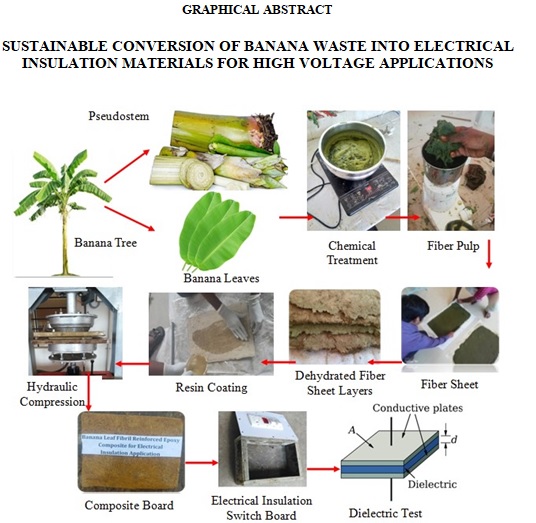
The study examined the electrical characteristics of epoxy composites that were reinforced with fibers derived from banana leaves and pseudostems. Specifically, the study focused on analysing the dissipation factor, loss factor, and dielectric constant of these composites. The study found that composites containing banana leaf fibers demonstrated enhanced dielectric properties in comparison to pure epoxy composites. This improvement can be attributed to the effective interlocking between the fibers and the matrix, as well as the polarization effects. Enhancing the amount of fibre in the material resulted in greater dielectric constants, reaching a maximum at a critical volume of 17.2%. However, at higher frequencies, the dielectric constants fell due to decreasing polarization. Chemical treatments, such as alkali and peroxide solutions, improved the bonding between the fibers and the matrix, leading to higher resistance to water and greater electrical insulation. The results also showed that banana leaf fibers had superior dielectric performance compared to pseudostem fibers, mostly because of enhanced nanoparticle bonding. Using banana fibers is particularly noteworthy since it contributes to environmental sustainability by recycling agricultural waste, hence mitigating the ecological consequences of synthetic products.
Total file downloads: 41